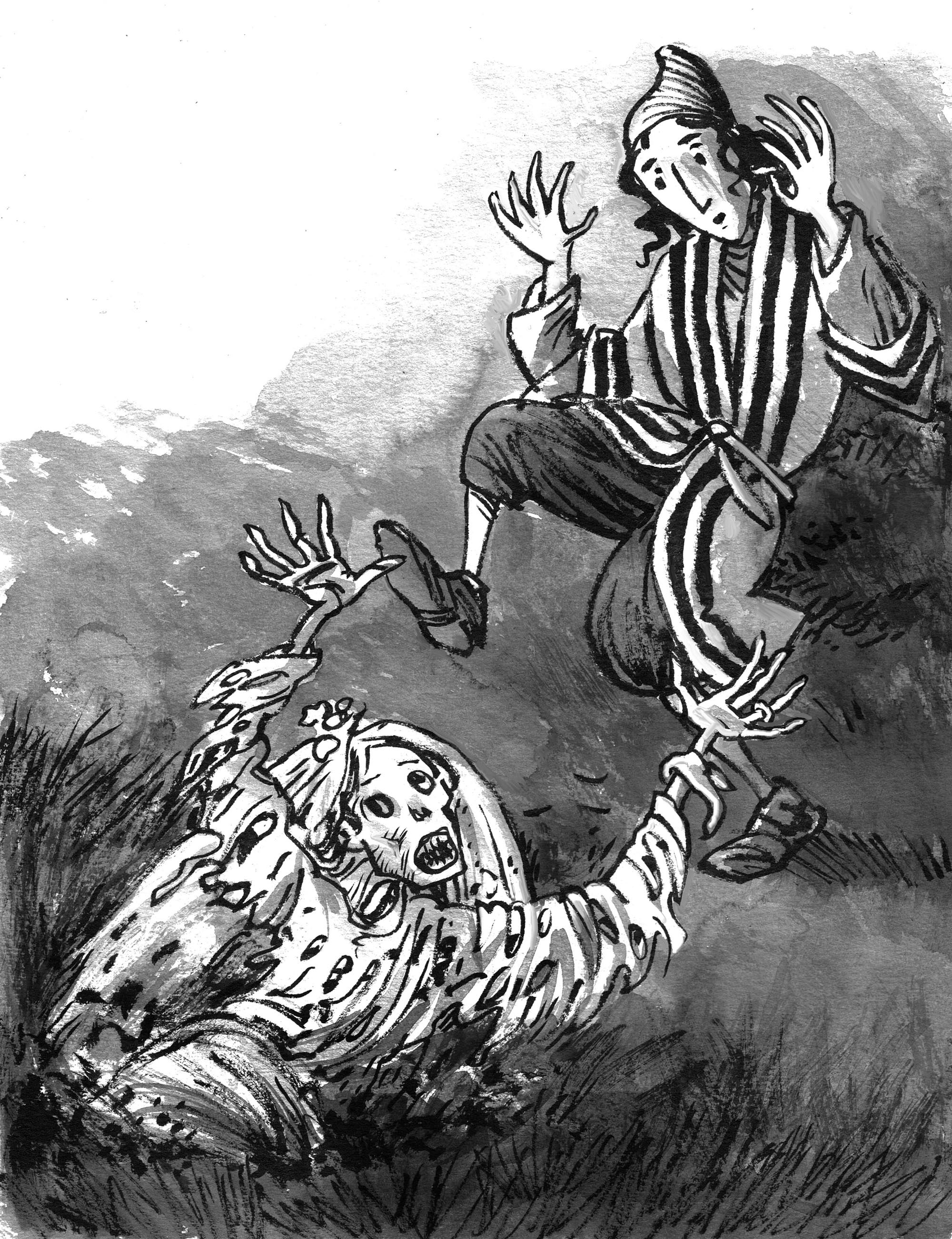The Jewish folktale that inspired Tim Burton's Corpse Bride

"The Death Bride" by Morburre under this license, unmodified
This time I wanted to relay the Jewish folktale titled "The Finger," as it's rumored to have inspired my all-time favorite movie: Tim Burton's Corpse Bride.
Here we go...
Long ago, on a clear, crisp night, a young man was traveling through the forest with his friends. He was on his way to a neighboring village, where he was supposed to marry the beautiful daughter of a wealthy merchant the next day.
As the young man and his friends traversed the woods, laughing all the while, they stumbled upon a twig jutting out of the soil. The branch was roughly the same size and shape of a finger, and the friends began to joke among themselves about who would "put a wedding ring on the finger."
Of course, the young man who was supposed to get married to the beautiful daughter of the wealthy merchant the next day insisted that he must be the one to put a wedding ring on the twig, as he was the first among his friends to marry. And so he did just that - he put his bride's ring on the branch, and he recited his wedding vows three times, as the old law requires.
To the young man's horror, the "finger" started to twitch, then rose up out of the earth. As it did so, the young man realized it was much more than a finger-shaped twig - it was a real human finger attached to a real human hand.
The hand clawed at the soil, as if the person it belonged to was trying to pull themselves out of their shallow grave. Soon a woman - a dead woman, shrouded in a decaying wedding dress - vaulted out of the muck.
Right away, the dead woman in the tattered wedding dress began to call the young man her husband, and she demanded they consummate their marriage immediately.
Understandably terrified, the young man and his friends dashed pell-mell toward the neighboring village (where, I'll remind you, the young man was supposed to be married the next day). Once they reached the village and determined they'd escaped the dead woman, they swore to never speak of what had transpired that night.
As fate would have it, though, the young man and his friends had not escaped the corpse. The next day, during his wedding ceremony, she showed up to stop it. She claimed the young man could not marry the beautiful daughter of the wealthy merchant, because he was already married to her. Again, the dead woman demanded the marriage be consummated. And when the true bride asked the young man whether he was really married to the dead woman, the corpse flaunted the wedding ring he'd placed on her finger. The rabbi conducting the ceremony asked the young man if there had been witnesses to the marriage. Because the young man's friends had seen it, the answer was yes. However, the union felt unnatural to everyone, so the rabbi told the young man, the corpse, and the true bride that he'd have to consult with a group of other rabbis before deciding whether the marriage was legitimate. In the end, the group of rabbis decided that although the young man's marriage to the corpse was legitimate, the dead have no claim on the living, and so the young man was free to not consummate the marriage, and to marry his true bride. Heartbroken, the dead woman fell to the ground in a lifeless heap of decomposing flesh and bones. The young man and his true bride were married, and they gave the corpse a proper burial and passed on her story to their children. I hope you enjoyed April 2023's favorite folktale! |

Receive a free book and never miss an update from A. P. Mobley by signing up for her newsletter, War on the Gods Army!
Thanks for joining War on the Gods Army!
Be sure to check your email inbox for your free book. If you don't see it, check your spam and promo folders for it.